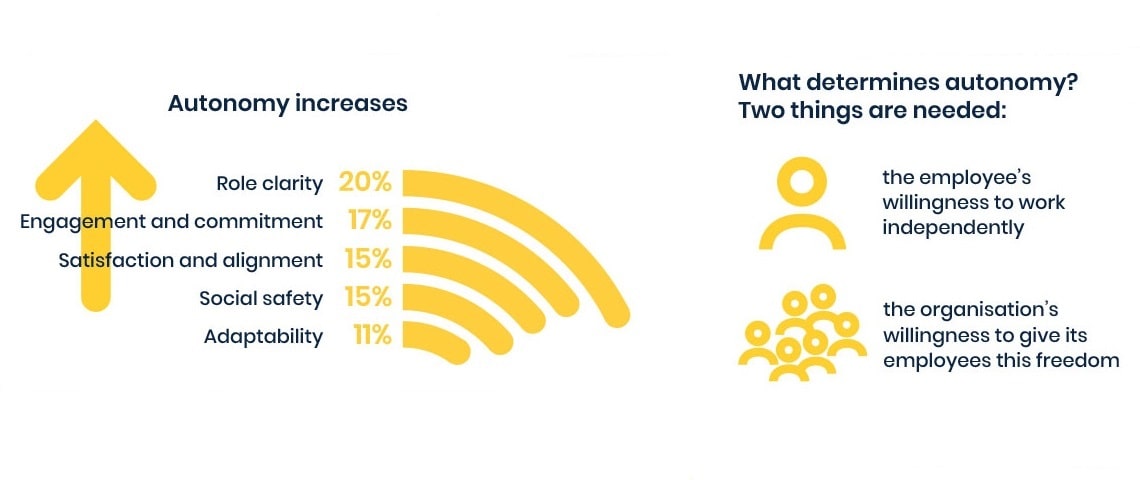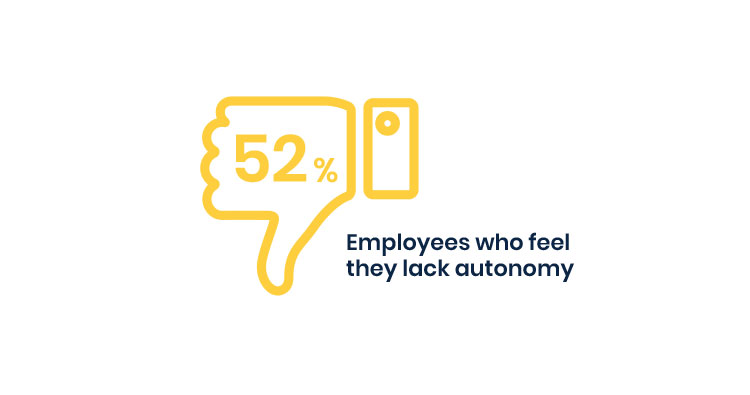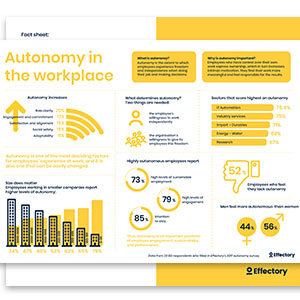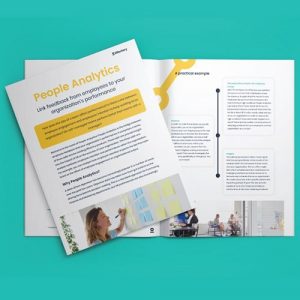Results from our latest research show 52% of employees lack autonomy in their work. Autonomy at work is the extent to which people have the freedom to make their own decisions about the content and planning of their work. Learn more about the impact of organizational autonomy.
HR analytics: autonomy and employee engagement

Autonomy at work
As a leader, board member, or manager, do you dislike being told what to do, and how to do it? Do you feel proud when you achieve a goal you set out for yourself, especially when you are master of your tasks and accountable for the outcome? Consider then how you feel in either of these situations if you’ve been in your role for several years.
There’s no need to be shy about admitting that you too value independence in your work, because autonomy is one of the most essential psychological human needs that enables each of us to enjoy what we do. You want to perform your tasks in a way that is best suited to your working style. You have specific skills, abilities, and preferences. And you feel most comfortable when you fulfil tasks how and when you choose to. Your people are no different.
HR Analytics: Autonomy data infographic & fact sheet
Get data-driven insights about autonomy in the workplace by downloading this infographic and fact sheet.
DownloadThey want to understand the logic behind their tasks and prepare the smartest or most impactful solution to achieve them. Autonomy at work allows employees to make their own decisions about the content and planning of their work. This freedom ensures that they can fulfill their work in a way that both suits them and achieves organizational goals.
In fact autonomy at work is one of the most researched concepts in occupational literature and what we know is that employees who feel autonomous are happier, solve problems more easily, work more productively and maintain a longer tenure. But is such an essential concept being implemented in reality?
Organizational autonomy, give a fish or teach to fish
You can of course expend energy instructing your people, micromanaging and checking them. Or you can provide them with the purpose and goals, and let them fill the proverbial boat with fish however they see fit. Our analysis drawn from over 23,000 employees reveals that 54% of men and 66% women say they experience low to medium autonomy at work. The gap between the genders needs attention in this regards, and there is certainly room for improvement for both. As Steve Jobs once said: “It doesn’t make sense to hire smart people and tell them what to do; we hire smart people so they can tell us what to do.”
Organizational autonomy not only inspires creativity but also many other fruitful outcomes, according to our research. We have seen that autonomy at work leads to greater accountability. It is also an essential factor to have higher levels of role clarity, alignment, and adaptability.

Autonomy is essential for employee engagement
Organizational autonomy and self-organizing work practices are on the rise, specifically in the Netherlands but also in countries that favour egalitarian approaches to leadership such as Denmark, Norway and Sweden. Governing their own roles and taking decisions freely helps employees to have a more in-depth view of what they can do to contribute to the organization and how they can improve their performance. As they master their work in their own way, it is more likely that they feel a sense of ownership and experience higher levels of engagement.
Our research findings are in line with this statement; as a staggering 79% of autonomous employees are engaged, and thus are more accountable and perform better. There is also a significant difference between organizations with more than 500 employees in comparison to startups of up to 100 employees: only 34% of employees in larger organizations feel autonomous at work, compared with 79% in startups. To get a complete snapshot of data driven insights into autonomy in the workplace, download our latest infographic and fact sheet.
Create impact with People Analytics
Link feedback from employees to your organization’s performance
Download
